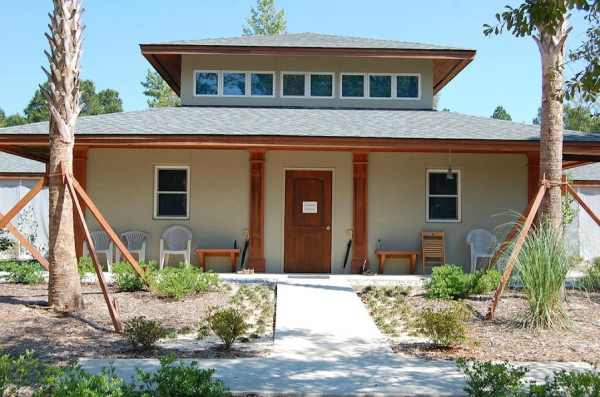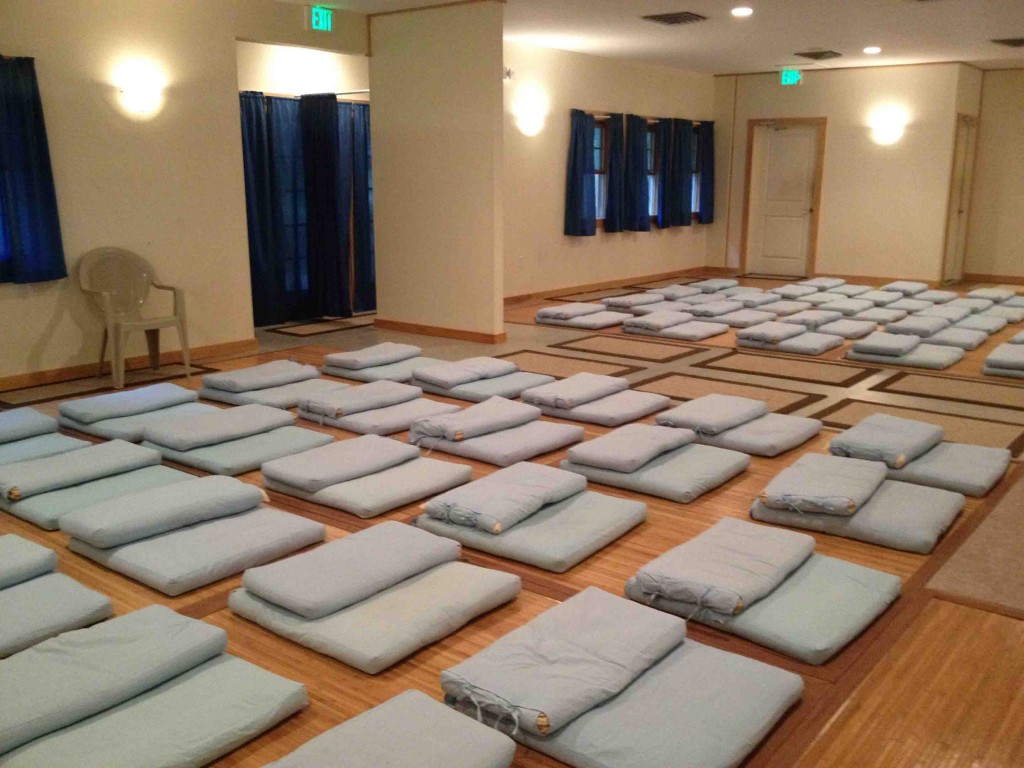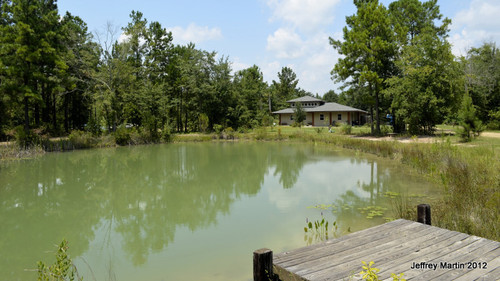Seeing things as they really are.
/Today is my first day home after culminating a 10 day Vipassana meditation retreat and I am so eager to share my experience with you!
Allow me to begin with a little background of what Vipassana is. Vipassana means - seeing things as they really are. It is a meditation technique that teaches:
- How to eradicate suffering in one’s life.
- It is a method of mental purification which allows one to face life’s tensions and problems in a calm, balanced way.
- It is an art of living that one can use to make positive contributions to society.
The technique I experienced is taught by S. N. Goenka in the tradition of his teacher Sayagyi U Ba Khin. It is one of India’s most ancient meditation technique rediscovered by Gautama the Buddha more than 2500 years ago.
I have been in the yoga world for almost 10 years now and it’s crazy to me that I didn’t know about Vipassana until a year ago when a friend of mine told me about it in late 2015. At the time, I was really curious and started researching it and found a center near Florida in Jesup, GA. I found out you have to first take a 10 day course, so I looked at dates and saw there was one starting December 27th 2015 and I told my beloved Brian let’s do this for NYE together! I set my alarm to remind me to apply the day the application process opened, but, I set the alarm a week later by mistake and after applying I was told I was number 40 in the waiting list, I figured this is not the year it’s happening for me. Oh well, next year!
Sometime in mid-2016 I meet a yoga student who had just come out of a 10 day course and she was raving about it, again I got really interested in attending again for NYE. This time I set my alarm for the right day and when application opening day came I applied at 12:30am and by 9am I was accepted. Yay! I’m in! My beloved got accepted too but later on he decided not to attend, which I had mixed feelings about because I really wanted us to experience this together and at the same time I was happy to go on my own and have no distractions.
Upon arriving at Dhamma Patapa Southeast Vipassana Center on December 27th 2016, I was given a form to fill out and a code of conduct to read and agree upon. If I didn’t think I could follow this code of discipline then it was best to not continue. This code of discipline is given to us before arriving so I was well aware of the do’s and don’ts. They are very strict and firm and with the best intentions. There is a reason for each rule and it is in our best interest to follow them for sure. Curious as to what these are? You can find them here .
I was also asked to surrender my phone, wallet, and any books, journal, pen, and paper I may have with me. This is to make sure that I don’t have anything to distract me during the 10 days.
On this day at 6:00pm there was a vegetarian dinner served, it was soooo good! Afterwards we all met in the registration hall to go over logistics, etc. After 8pm we were to begin the course and noble silence started, Noble Silence means silence of body, speech, and mind. Any form of communication with fellow student, whether by gestures, sign language, written notes, etc., is prohibited. There is a reason for this and by day 10 when we resumed talking by mid-day I understood the importance of silence throughout the whole course.
This is the course timetable for the 10 days. It has been designed to maintain the continuity of practice. For best results we are advised to follow it as closely as possible. So I did.
4:00 am- Morning wake-up bell – I was up and ready to go!
4:30-6:30 am - Meditate in the hall or in your room – I went to the hall.
6:30-8:00 am - Breakfast break – I had the same thing every day, oatmeal with prunes, ezekiel bread toast with PB&J, and organic Chai tea with rice milk
8:00-9:00 am - Group meditation in the hall – this one is mandatory
9:00-11:00 am - Meditate in the hall or in your room according to the teacher's instructions – I would stay in the hall
11:00-12:00pm - Lunch break – every day was different and delicious, always vegetarian, usually a grain, a vegetable dish, legumes dish, salad bar, and fruits
12pm-1:00 pm - Rest and interviews with the teacher – I would walk the walking trails and then lay and rest on the dock by the pond.
1:00-2:30 pm - Meditate in the hall or in your room – The first 5 days I stayed I the room, then the last 5 days I went to the hall.
2:30-3:30 pm - Group meditation in the hall - this one is mandatory
3:30-5:00 pm - Meditate in the hall or in your own room according to the teacher's instructions – I would stay in the hall
5:00-6:00 pm - Tea break – Tea and fruits, I would have apple and/or banana with cinnamon and honey with chamomile tea and rice milk.
6:00-7:00 pm - Group meditation in the hall - this one is mandatory
7:00-8:15 pm - Teacher's Discourse in the hall – We would watch a video of Mr. Goenka explaining the why and how of the technique, as well as examples and entertaining stories.
8:15-9:00 pm - Group meditation in the hall - this one is mandatory
9:00-9:30 pm - Question time in the hall – I would be in bed by 9:15pm
9:30 pm - Retire to your own room--Lights out
I was there to meditate and do the work, and slacking and sleeping was not an option nor a desire for me. I am glad I made the best use of my time there and stayed for most of the meditations in the hall. There were times at the beginning where I would stay in the room when we were given the option to, but then I found that I would doze off and the temptation to go to sleep was greater… and guess what? I did go to sleep a couple times. And its ok, my body and mind needed them. But when you attend I highly recommend that you meditate in the hall whenever possible. Remember you get back as much as you give.
Here are 8 concepts and inspirations I share in my yoga classes that I’ve learned in the past either through books, trainings, experiences and even memes on facebook, that I really vibe with and now are very real to me because through this practice of Vipassana Meditation I have now experienced them for myself at the deepest level of experience.
1. Magic Happens outside your comfort zone.
- Yes, yes, yes! It was in the uncomfortable moments during Vipassana meditation that I experienced the magic of awareness and equanimity. That is to be
2. Mind over Matter.
- Aaahhh, the mind/matter phenomena. I was able to use my mental determination to stay aware and equanimous to overcome my physical unwanted sensations during the meditation.
3. Attachments create suffering.
- It became very real and apparent when I would get attached to a thought, idea, or sensation that would arise during the meditation, along with it, suffering and misery would bubble up. The work is that as these things bubble up, to allow them to disappear.
4. The way that we think reflects on how we feel, how we feel reflects on how we speak, how we speak reflects on our actions, and our actions manifest our reality.
- The thoughts that would arise either during meditation, or during breaks ultimately created my experience.
5. Meditation is the highest yoga.
- So true! Yoga means to yolk and unite with divine energy. Through the Vipassana technique I was able to reach a state where I felt completely in union with all that is, however short it lasted, it was very real and beautiful. I was full of love and compassion for everything.
6. Thinking is living in the past or future. Paying attention is living in the present.
- Yup! The whole point of Vipassana is to experience life as it really is, not as it was or will be, and we do that through paying attention.
7. Suffering is a choice
- When I was able to watch objectively the pain in my body arise while sitting in meditation for hours without moving I was able to simply watch the pain disappear, when I started putting labels on the pain and allowed my emotions and thoughts to take over, then the suffering would arise.
8. Change is the only constant.
- One of the main aspects of Vipassana meditation is observing impermanence (anicca), the phenomena that all of life without exception is transient, evanescent, and inconstant.
There are 3 meditation techniques I learned in this 10 day course.
1. Anapana Meditation – respiration awareness. This is taught for the first 3 days of the course as a pre-requisite to the actual Vipassana technique. Here is an example that can be practiced by anyone.
2. Vipassana Meditation – to see things as they really are. This is taught on the fourth day for the rest of the course. You can only practice this in the 10 day course and after you’ve completed the 10 day course. It really must be experienced with a trained teacher to be understood.
3. Metta Meditation – loving-kindness. This is taught the last day of the course. It is the simple practice of directing well-wishes towards other beings.
And now the real work begins. Maintaining this practice. One hour in the morning and one hour a night.
It truly believe everyone can benefit from a 10 day Vipassana meditation retreat. It is a remarkable way to understand the mind and matter (body) phenomena and how we can dissolve suffering and misery from our lives, and, who wouldn’t want that right?
When you are ready, here are resources for you to find your own Vipassana experience:
http://www.patapa.dhamma.org/ - US Southeast Center
http://www.dhamma.org/ - International Website
http://pariyatti.org/ - Books, ebooks, audio, and videos specializing in titles about Vipassana Meditation.
Becasue it is a no cellphone facility I was not able to take pictures but here is a slideshow of the woderful facility I attended in Jesup, GA. And here are some pictures I found online of the center.
May all beings be happy!
Barbara




